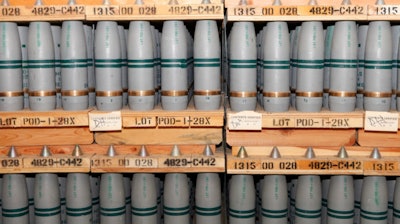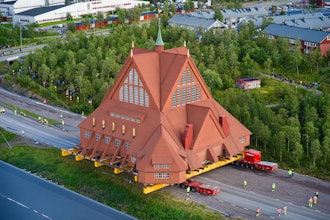
RICHMOND, KY. (AP) — Officials have begun destroying Cold-War era chemical weapons that have been stored at a Kentucky Army depot for decades.
The facility at the Blue Grass Army Depot successfully destroyed a mustard-agent munition on Friday in Richmond.
It marked the beginning of the facility's static detonation chamber operations, which will handle munitions that are unsuitable for automated destruction at the depot's pilot plant.
Last month, officials including U.S. Sen. Mitch McConnell and Kentucky Gov. Matt Bevin gathered at the depot to ceremonially mark the beginning of the destruction of the weapons.
The depot has a stockpile of about 523 tons of mustard, GB and VX nerve agent. The pilot plant was finished in 2015, but operators and staff trained for years to prepare for the destruction operations.





















